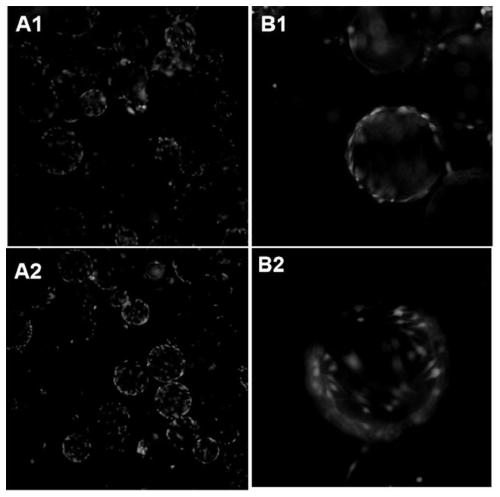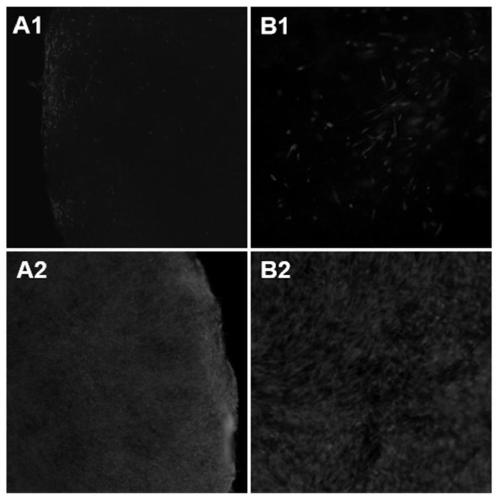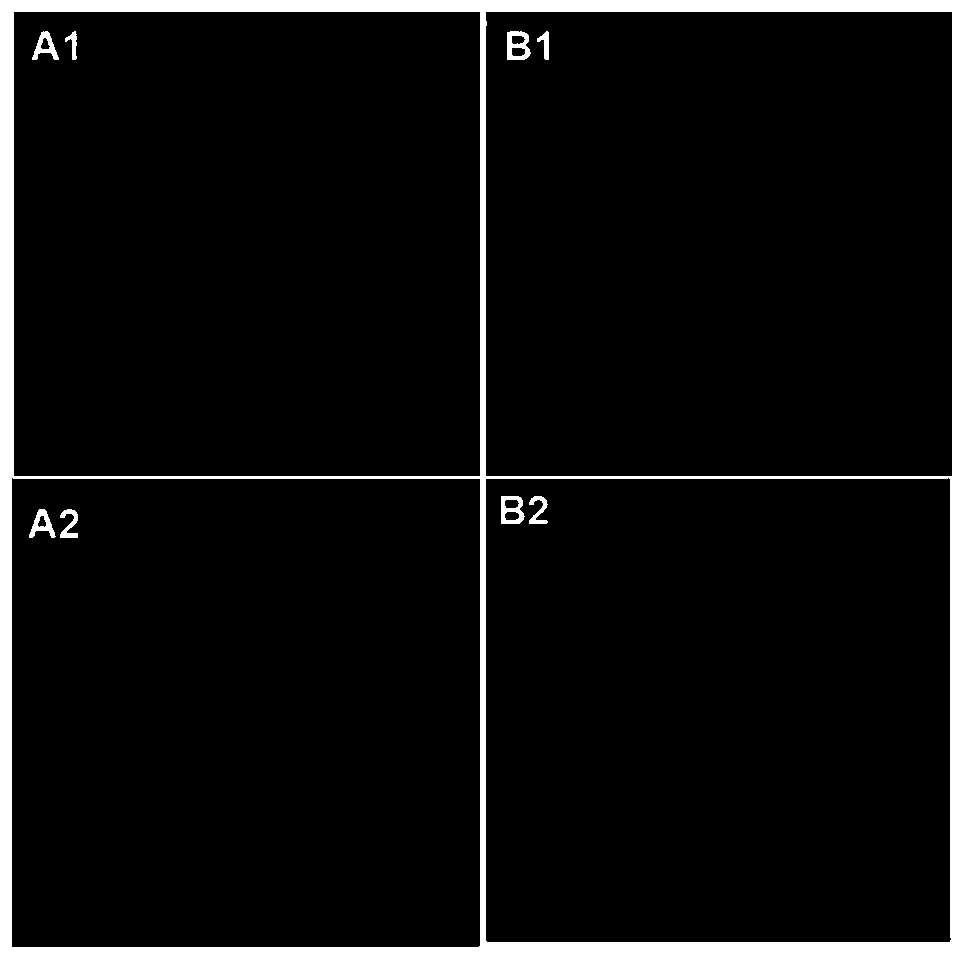Improved microcarrier living cell fluorescence staining method
A fluorescent staining and microcarrier technology, applied in the biological field, can solve the problems of low cell viability, cell shedding, low cell permeability, etc.
- Summary
- Abstract
- Description
- Claims
- Application Information
AI Technical Summary
Problems solved by technology
Method used
Image
Examples
Embodiment 1
[0019] Human adipose-derived mesenchymal stem cells (ADSCs) were cultured with Cephodex spherical microcarriers (Binzhou Bell Carey Biotechnology Co., Ltd., Shandong), and the microcarriers with a concentration of 3 g / L were pre-expanded, sterilized, and sterilized according to the instructions. processing, the specific method is as follows:
[0020] Take 0.3g of microcarriers and add 30-50ml of sterile PBS to soak for 48 hours to fully expand, sterilize by high-pressure steam for 30 minutes, wash with sterile PBS for 3 times, add 50ml of complete medium into a specific bioreactor, and incubate at 37°C for 24 hours , for sterility testing. After confirming the sterility, discard the test solution, add 100ml of complete medium again, and divide the ADSCs according to the cell density of 3*10 5 / ml for inoculation and cultured with intermittent stirring.
[0021] When the cells adhere to the wall to about 80%, take 1ml of microcarrier cell suspension and put them into 24-well ...
Embodiment 2
[0023] Human umbilical cord mesenchymal stem cells (hU-MSCs) were cultured using fixed-bed Cephodisk sheet microcarriers (Binzhou Bell Carey Biotechnology Co., Ltd., Shandong). The specific culture method was: take 100 microcarriers and add 30-50ml sterile Soak in DPBS for 30 minutes, sterilize with high-pressure steam for 30 minutes, wash with sterile DPBS for 3 times, add 20ml of complete medium into a specific culture bottle, incubate at 37°C for 24 hours, perform sterility test, and discard the test after confirming sterility solution, re-add 20ml of complete medium, hU-MSCs according to cell density 1.5-2.5*10 4 / ml for inoculation and cultured with low-speed intermittent agitation. On the third day of culture, set up group A and group B, and randomly select one piece of microcarriers for living cell fluorescence staining observation, the specific method is as follows:
[0024] Group A washed the microcarriers with sterile DPBS for 1-2 times, added 2ml of Calcein-AM stai...
PUM
 Login to View More
Login to View More Abstract
Description
Claims
Application Information
 Login to View More
Login to View More - R&D
- Intellectual Property
- Life Sciences
- Materials
- Tech Scout
- Unparalleled Data Quality
- Higher Quality Content
- 60% Fewer Hallucinations
Browse by: Latest US Patents, China's latest patents, Technical Efficacy Thesaurus, Application Domain, Technology Topic, Popular Technical Reports.
© 2025 PatSnap. All rights reserved.Legal|Privacy policy|Modern Slavery Act Transparency Statement|Sitemap|About US| Contact US: help@patsnap.com



